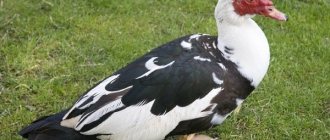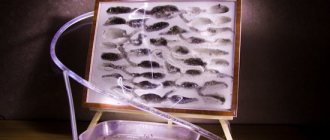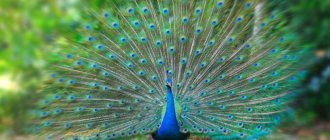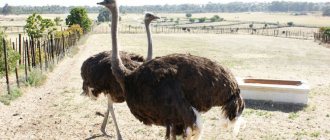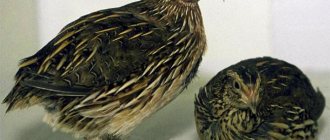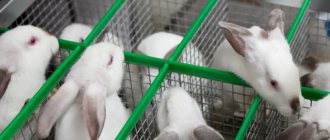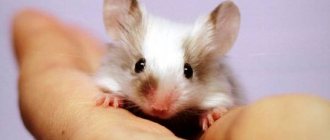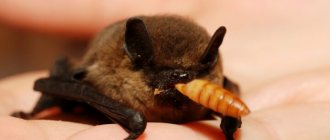Types of feeding cockroaches
Cockroach farming has become a profitable business.
Financial investments in the business are small, but demand is good. In China, entire farms are being created to raise arthropods to feed livestock and fish. Insect colonies reach millions of individuals. The products are bought not only by livestock owners, but also by restaurateurs from various countries. Cockroach meat is popular; it is considered a healthy and tasty delicacy. Several characteristics contribute to the popularity of arthropods as food:
- low cost of insects;
- unpretentiousness in nutrition;
- high fertility;
- undemanding conditions of detention.
Feeding
The Argentine cockroach is a frugivore that prefers fruits and grains, avoiding (but still consuming) high-protein sources such as meat or waste from other animals. Particularly fond of semi-sweet plant materials. Suitable food:
- carrot,
- all kinds of tropical fruits (mango and papaya),
- apples,
- avocado,
- bananas,
- cherry,
- pears,
- oranges,
- strawberry,
- fresh corn,
- tomatoes (some individuals show no interest in them, while others eat them readily),
- lettuce (not Iceberg or Romaine),
- many other types of greens, including herbs.
As a supplement to the diet you can use:
- all dry food for cats and dogs based on cereals,
- food for fish,
- granules for rodents,
- food for ciliated geckos and bearded dragons.
Wheat bran and sprouted grain-based foods will also be eaten, such as various types of bread, unsweetened breakfast cereals (such as Cheerios or Special K), and even soft pasta, but such a diet should be supplemented with some kind of greens and fruits to ensure adequate nutrition. amount of water.
Tubers with a high starch content, such as potatoes and sweet potatoes, are eaten with disdain and, apparently, only for their water content.
Newborn nymphs apparently need the waste products of the imago for survival and shelter.
Excess protein in dubia's body can form too much uric acid, causing gout and the potential death of cockroaches as well as the animals they feed.
Marbled cockroach (lat. Nauphoeta cinerea)
Stores already sell large or medium-sized individuals, and it is quite difficult for a small robin to cope with them. She loses more energy while she kills a cockroach half the size of the bird itself. Therefore, I kept ten of them, which I did not have time to feed, and now a huge colony has multiplied from ten of them.
These cockroaches are unpretentious and multiply quickly, so you should take a large container at once. Unlike the mealworm, the marbled cockroach needs height. They love to climb, crawl and be active everywhere. In order to increase their surface area, it is worth putting up egg trays - ordinary, cardboard ones in which eggs are sold. They are universal and suitable for any insects that like to hide. You can cut a hole in the lid of the container and cover it with mosquito netting, but some people keep the containers open by smearing the edges with petroleum jelly. Cockroaches really don't like to walk on it.
Filler
The filler should be absorbent. This is corn filler, sawdust, pellets. You can add flour, oatmeal, crackers. Cockroaches are unpretentious eaters and will happily gnaw on everything if you forget to give them food.
Their problem is that their waste products have an extremely unpleasant odor. It is worth changing the litter as soon as you smell ammonia, or simply monitor the amount of excrement on the bottom: a thick layer means the need for a change.
Due to the abundance of wet excrement and wet food, it is necessary to monitor not only the litter, but also the egg cells, replacing them periodically. They actively absorb moisture and become unusable; in addition, the cells saturated with fruit juice are gnawed by hungry cockroaches.
Food
Marbled cockroaches eat everything. You can feed leftover bird food, including not only plant food, but also animal food and food for insectivores. But this is very little, so you need to add leftover vegetables and fruits (for example, an apple core or a banana peel). It is also worth sometimes putting in meat and fish, cat and dog food, and often gammarus. Be sure to put a mineral stone and/or a mixture and sepia.
Temperature, humidity, light
Cockroaches do not require special conditions; humidity is not important for them. However, it is worth noting that they love warmth, and at temperatures above 20 degrees they reproduce very actively. Direct sunlight, as with flour beetle, should be avoided.
Peculiarities
Females expose their egg sac (also called ootheca) to ventilate. It can be taken away and used for food for your birds. Like all eggs, ootheca is extremely nutritious.
These cockroaches have extremely many stages of development. That's why they are good: marbled cockroaches can be fed to even the smallest birds. As the cockroach matures, it molts, and during molting it becomes white and extremely soft, for which it is extremely loved by birds. But you shouldn’t overdo it; it’s better to use them as a treat.
Cockroaches get along well with mealworms. They do not touch live beetles if they have enough protein in their diet, and eat dead ones.
They have wings, but they cannot fly, but they can jump well. The marbled cockroach lives from birth to death for about 10 months. The female is ovoviviparous, can give birth to up to 30 cockroaches, and the gestation period is about a month. Elevated temperatures accelerate the development of individuals and the course of pregnancy.
Turkmen (Shelfordella tartara)
A popular feeding cockroach, it is easy to keep and has a soft, chitinous cover. Under natural conditions, it lives in the deserts of Asia and the Middle East. Characterized by pronounced sexual dimorphism:
- Females are massive, brown with reddish spots on the sides, the wings are reduced. Length 30 mm.
- Males are slender, have long wings, and are orange in color. Size 25-30 mm.
To grow arthropods you will need a cage with good ventilation. It is best to use cardboard egg trays as shelters. The optimal temperature is 27-30°, humidity 60-80%. Insects need regular access to water. Vermiculite is poured into the drinking bowl or cotton wool is placed to prevent the larvae from drowning.
Feed
The species needs a variety of food: bran, vegetables and fruits, bread, oak leaves. To prevent cannibalism, protein is given in the form of gammarus, eggs, and dog food.
Reproduction
Adults live 3-4 months, females lay ootheca with eggs every 2 weeks. For the development of offspring in the capsule, high humidity is necessary. It is recommended to collect cocoons and place them in damp moss. The larvae will need shelter from the adults.
Representatives of the species do not run along walls and do not require lubrication. Due to their small size, reptiles are fed several adults at once. The downside of Turkmen cockroaches is their unpleasant smell.
Breeding and maintenance
Very easy to maintain. You can use a glass aquarium, a plastic container, or any large plastic box. Turkmen cockroaches do not climb vertical glass or plastic surfaces, so a lid is not necessary, but is still advisable to keep the terrarium moist and in case it accidentally tips over. Since the larvae are very small, they will be able to crawl out if there is even the slightest texture on the walls of the container. Check that the walls are smooth. Some hobbyists keep them in double plastic containers to prevent sprouts.
Nymph in foliage
To create additional tiers and space, it is convenient to use egg cartons; they can be placed both horizontally and vertically. Substrate is not necessary as this species does not burrow, but coir and sphagnum moss or any other mixture can be used.
If you use any kind of substrate from a hardware or garden store, make sure it doesn't contain chemicals!
They feel normal at room temperature, but grow faster and reproduce better at 26–35 °C. They are kept in a warm room, but a thermal mat will also work. Recommended humidity is 40‑50%. You can keep a spray bottle handy to maintain moisture in drier areas, or dampen a terry towel and cover part of the terrarium with it instead of a lid. Periodically wetting the substrate can also help maintain proper humidity.
If you notice that the fry are dying or having problems molting, it is most likely due to insufficient humidity.
Recently molted nymph
They eat almost anything. When feeding fresh fruits or vegetables, do not feed more than they can eat in 24 to 36 hours to prevent the food from molding, rotting, or attracting fruit flies.
Keep food and water available at all times. Clean up waste as needed. Because this species produces oothecae, garbage should be checked to ensure that they or small larvae are not accidentally thrown away.
One of the most prolific species of foraging cockroaches. Females can lay 1-2 oothecae per month, each containing 20-30 cockroaches. Oothecae are sensitive to desiccation and hatch in 2-6 weeks depending on temperature and humidity.
American (Periplaneta americana)
This species ranks third in the ranking of food items. The insects, along with the cargo of sugar cane, spread throughout the world. The adult size is 27-44 mm. Sexual dimorphism is expressed in the reduction of the female’s wings. Representatives of the species are reddish-brown in color. Life expectancy is 8-10 months.
Insects are reared in cages with a lid. When catching, be careful; adults run quickly. A metal mesh is installed for ventilation. Temperature from 22 to 32°, moderate humidity. Trays are used for shelter. Food should be varied: vegetables, dry cereal, meat, greens. The disadvantages include the aggressiveness of the species; they can attack weakened spiders.
Madagascar (Gromphadorrhina portentosa)
Leopard gecko lizards require more protein and are fed with large Madagascar cockroaches. The size of the female is 60 mm, the male is 55 mm. Adults are brown, wingless. They have an aggressive character and emit a hiss when threatened. Threatening sounds are produced by contraction of the abdomen. Larvae and adults coexist without problems in the same terrarium. One individual is enough to feed a lizard or spider.
Information. Males are distinguished by characteristic protrusions on the pronotum.
Green (banana) (Panchlora nivea)
The species is not particularly widespread, but has its advantages:
- soft cover;
- does not take root in apartment conditions;
- does not move along the walls of the cage;
- multiplies quickly.
The size of insects is 22-25 mm. The temperature in the terrarium must be maintained at 25-30°. Water is sprayed daily, optimal humidity is 70%. A mixture of shavings and vermiculite is used as bedding. What to feed green cockroaches? They are omnivores, but their jaws are not adapted for solid food. It is better to give apples, bananas, peaches, tomatoes, muesli. The species is ovoviviparous; the larvae burrow into the ground after birth. The litter layer is desirable to be less than 5 cm.
Advice. Open the cage carefully; insects are capable of flight.
Red or Prussian (Blatella germanica)
A synanthropic species can be kept in a terrarium and be beneficial. The size of the Prussians is 10-13 mm, they are suitable for young birds and reptiles. Adults have an elongated, yellowish coffee-colored body. The larvae are small and can squeeze through a minimal gap. When breeding, attention should be paid to the integrity of the cage. Insects reproduce quickly and reach maturity. The optimal temperature is 30°. No substrate is used; instead I use cardboard trays. Prussians are omnivores; they are given oatmeal, bread, vegetables and fruits. There should be a drinking bowl in the cage.
Advice. Select candidates for cultivation with care. Prussians do not always die from poison, but their body is poisoned. Such food will harm reptiles or spiders.
Black (Blatta orientalis)
Adults are quite large up to 30 mm. The color is black or dark brown. Insects are secretive. The female leaves 20 ootheca with eggs during her life. 10-20 larvae emerge from each. In favorable conditions, they grow in 5 months. Black rams need food with protein (dry animal food, eggs, meat). When food is scarce, they are prone to cannibalism.
Before breeding cockroaches, study all the information about their needs and habits. For beginners, insects often escape their cage. In the warm season, they take root indoors and begin to actively reproduce. To sell live food, they use specialized forums, announcements in groups, and pet stores. The conditions for keeping all tropical and synanthropic species are similar. But when raising cockroaches, special care is required, otherwise, instead of raising cockroaches, you will have to destroy them.
Who is he
This insect has several names. It is also called the ashy cockroach, naufet. He comes from tropical countries. They have spread all over the world thanks to their unpretentiousness and vitality. They are not afraid of low temperatures, dry air and poor quality food. Many insecticides also cannot harm these insects.
Marbled cockroaches are almost no different from their relatives. Their length is about three centimeters. Females are slightly larger than males. They have wings, but they cannot fly. They are not afraid of hunger. They will live without food for several days. You don’t have to look for special food either. Naufet is omnivorous. They live for about ten months.
The ash cockroach cannot be called a beautiful exotic insect, but as food it is rich in proteins and other nutrients that are necessary for the life of larger animals.
Naufet refers to:
- tipu - arthropods;
- class - insects;
- order - cockroaches;
- species - Nauphoeta cinerea.
Mealworm, or Great mealworm (lat. Tenebrio molitor)
Due to the ease of breeding, they were the very first to appear to me. Collecting information was not difficult, and at first the worms settled in a simple container. The result was not bad: even in relatively spartan conditions, they multiplied stably.
But over time, some rules for their more productive maintenance appeared: The container must be flat; The main thing is width, not height.
These insects cannot crawl along the walls of a container in any way, and therefore this particular box shape is optimal for them. A hole should be made in the lid of the container itself and a mosquito net should be attached.
Option for attaching a mosquito net to a container.
Filler
At the beginning of their keeping they had flour and oatmeal sprinkled in, but then it turned out that the mealworm lifestyle is a little more complex than simply burying itself in the ground, and subsequently several fillers were used. Priority is still given to flour of various types - rye, wheat, coarse - it occupies about 50% of the litter. Next comes oatmeal, old muesli is also used (optional). Then the main components are sawdust and coconut substrate. This is a great addition to add looseness and interesting texture to the adult beetles. You can also add corn filler. Moreover, beetles are excellent eaters of litter components, so if you forget to feed them, nothing bad will happen; they will successfully eat the sawdust.
There is an opinion that levels of paper should be made in the container, since the life cycle of the beetle includes an adult beetle that lives on the surface, a larva (the mealworm itself) that crawls everywhere, and a pupa that pupates in the lower layers. To create them, newspapers and magazine paper are used. However, in the case when the levels are created by kitchen napkins, the latter are quickly eaten, leaving only the top layer. It can be used to “harvest” worms. Khrushchak likes to sit just under large flat sheets. This can be a dried piece of peel, which will certainly remain if you put fruit on the worms, or a piece of napkin under which they stuff themselves. And by lifting it, you can immediately get several worms, eliminating the need to dig through the filler to find a treat for the birds.
The filler does not become dirty for a very long time, so you can change it from time to time.
Uneaten pieces of fruits and vegetables, as well as skins that insects do not eat, also become filler.
Humidity and light
Insects do not require high humidity and live under normal room conditions. But it is advisable to place the container where there is no direct sunlight.
Feeding
In addition to the fact that the beetles themselves live in their own food, they should be specially fed with juicy food. You can give pieces of fruits and vegetables, yesterday's food of insectivorous birds. It is imperative to give protein foods such as meat, fish, gammarus, and daphnia. Worms do not eat too much, and you can feed them as much as possible, without a special schedule. They also eat dead beetles and moult skins. It is better to spread the food over the entire surface of the container so that everyone gets it.
They also put in sepia and mineral stone, which they eat with pleasure.
Sepia (cuttlefish shell) chewed by a mealworm.
There is no need to install additional drinkers or water tanks.
To easily get a large amount of flour at a time, it is best to wait until they are collected under a piece of food
As a food item, these are wonderful insects: they are easy to keep and easy to breed. Birds eat such insects at any stage of their development.
Flight
Although adult males are known to rarely fly, they have fully developed wings and pigmented muscles typical of cockroaches, capable of meeting the high-speed energy needs of long-duration flight. In laboratory tests from a 2.5 m high ramp, adult males were able to align dorsoventrally and rapidly spread their wings to control and manipulate gliding; however, active flight did not maintain or increase altitude. Adult females have only vestigial wings and lack the muscles needed for flight, and have shown no flight control in test runs.
Argentine cockroach - what kind of animal is it?
Of course, this is not an animal at all, but quite a full-fledged insect from the order of cockroaches, the Blattelidae family. So that you understand the scale of my childhood despair when my hand plunged into a basin with live food, the size of this creature reaches 4.5 cm in length. The cockroach's homeland is South America and New Guinea, where, like our ants, they densely inhabit the forest floor.
The burrowing lifestyle in the natural environment requires special conditions of detention - both larvae and adult Argentine cockroaches need a substrate in which they can burrow. The male and female are very different in appearance: females are somewhat wider and more rounded, and males have wings with which they can fly short distances.
If for some reason you have decided to start breeding these creatures, then here is a list of arguments in favor of this decision:
- the Argentine cockroach does not hiss or chirp like other cockroaches or crickets;
- it does not have an unpleasant odor (yes, some other species do);
- the cockroach is slow - even if it can get out of its home, it will not be able to run far;
- in some ways they are even beautiful - dark, glossy, with brown-orange spots. Why not an exotic pet?
Depending on the breeding goals, this species also has a disadvantage: slow development. Compared to other species, for example, the marbled or Turkmen cockroach, the Argentine cockroach develops quite slowly. The individual reaches sexual maturity only at seven months, and the female carries an ootheca, according to various sources, from 30 to 60 days. The insect is viviparous; two to three dozen young will appear from one ootheca. The Argentine cockroach lives on average two years; a female can produce offspring about 5 times during her life.
What's wrong with people who raise cockroaches?
Everything is fine with them, there is no reason to worry and see a psychiatrist. Cockroach farming usually has two purposes: either keeping the insect as an exotic pet, or breeding the same insect as food for another exotic pet. If in the first case questions may arise (well, really - you can’t even play with him or cuddle with him), then the second case is completely justified.
So, if you have got yourself an amphibian, reptile or large arachnid, get ready for the fact that you will also have to select food for your new friend.
Breakfast of a champion - protein bar, oh, cockroach
Do you know why the Argentine cockroach is an ideal food for some pets? Because it's super nutritious. Each individual consists of approximately 36% protein, which is perfectly digested and absorbed. Typically, insects are fed several times a week, but immediately before feeding the pet, it is customary to thoroughly fatten several pieces during the day.
In general, not an insect, but a real treasure, which will also be useful to those who are joked about by colleagues and friends because of their reverent love for exotic creatures: just imagine what a sensation an Argentinean planted in the pocket of an ill-wisher will create. I’m kidding, of course, you can’t mock living beings, and I’m not talking about people now.
Morphological description
The Argentine cockroach blaptica dubia is medium in size and has pronounced sexual dimorphism. Body length 40-45 mm. The male is slimmer and has long, dark wings with orange spots at the base. The female is more rounded, dark brown with orange spots at the base of the abdominal segments. The wings have atrophied, only small rudiments remain. Their length is about 1 cm. The limbs are reddish, densely covered with spines. Males are capable of short flight from elevated ground; they cannot take off from a flat surface.
Interesting fact. The color of insects from different colonies differs. Its intensity depends on the environment and diet.
Differences between a male and a female
Male and female marbled cockroaches differ in body size. The wings of males are shorter, the back of the body is pointed. Before mating, they actively flap their wings. In the male, the upper side of the abdomen is almost black, in the female it is lighter.
In addition, you can determine that this is a female by the ooteca that she wears on herself.
Why are Argentine cockroaches bred?
Blaptika Dubia is an ideal food for insectivorous animals: lizards, geckos, monitor lizards, spiders, birds, hedgehogs. Advantages of this type:
- they are superior in nutritional value to other insects: the Argentine cockroach contains 36% protein, and the cricket contains only 18% protein;
- soft chitinous cover;
- unlike Madagascar cockroaches, they do not make any sounds;
- absolutely no smell;
- they are slow, which makes them easier to catch if they escape, and also makes them desirable prey for predators;
- do not crawl on vertical surfaces;
- easy to maintain.
They breed Argentine cockroaches for their exotic pets or as additional income. Feed crops are sold through pet stores, thematic communities on social networks, and message boards.
You can buy an Argentine cockroach for 30 rubles apiece, but there are offers for 3 rubles. for one individual.
Structure
Cockroaches have the same body structure as other insects: three body segments (head, thorax and abdomen), six legs, two pairs of wings, two antennae and two eyes. In some species, the wings are underdeveloped and cannot be used for flight. Others have wings of normal length, but still cannot fly.
Typically, the head of cockroaches is turned down and covered from behind by their shield (in fact, this is an extension of the chest that reaches the head). In most species, the head is not visible when viewed from above.
Description of the species
The Latin name for the Argentine cockroach is Blaptica dubia. Due to its habitat and coloration, the insect has several other names:
- Guyanese;
- Argentine woody;
- orange-spotted.
The last name may seem strange, since these are usually dark-colored insects, but there is a reason for this.
Appearance
The Argentine tree cockroach is a medium-sized insect among its fellows. The body length of representatives of this species is 40–45 mm. The color can range from dark brown to black with orange transverse stripes. The stripes are so faint that they can only be seen in bright light. Because of these stripes, the species of blaptika dubia received the name “orange-spotted.” Juveniles have much brighter stripes than adults. Depending on diet and habitat, color may vary among different populations.
The Argentine forest cockroach has well-developed sexual dimorphism. It is impossible to confuse a male with a female even by touch in the dark. The male is slimmer and more graceful, with long wings covering the entire body. The female is broad-bodied, and only rudiments of her wings remain.
Interesting!
The species is not adapted to movement on vertical surfaces. This feature allows you to keep cockroaches in ordinary plastic containers without fear of escape. Sometimes cases were recorded when young animals were still able to hold out for a short time on a vertical wall covered with latex.
Habitat
The Argentine cockroach is native to the tropical forests of America. Blaptica dubia is found in Central and South America from Costa Rica to Argentina.
Habitat
Insects live on the forest floor. Young animals tend to burrow into the substrate. Imagoes are less attracted to such pastimes.
The optimal air temperature for this species is between +24 – 35°C. In colder air, the Argentine forest cockroach does not die, but will not reproduce at temperatures below +20°C.
On a note!
Argentine insects are less sensitive to humidity than other types of cockroaches. Larvae require 65% humidity, adults - 50%. But if the humidity is too low, the nymphs will have difficulty molting.
Housing
Your cockroaches need a terrarium or container that is safe, escape-proof, and large enough. Young nymphs can escape through the smallest of cracks because their bodies are really flat. Sliding doors, commonly used in terrariums, leave an open space between them through which small cockroaches can escape. Some species can crawl on vertical glass or plastic, while others cannot. Some species can fly. Be sure to find out what features the species you choose has in order to provide protection against escapes.
The size of the insectarium depends on the number of cockroaches you want to keep and their size. Generally speaking, the terrarium should be at least 6 times the space occupied by cockroaches. In this case, they have enough space to crawl and to get away from their fellows if they want. More is always better.
You need to provide your pets with good substrate and hiding places. The appropriate substrate depends on the species you are keeping; some need a moist environment, others need a dry environment. To create a humid environment, you can place damp soil at the bottom of the terrarium. You can use tree bark, flat stones and driftwood as shelters. To create a dry environment, you can cover the bottom with straw and use egg cartons or small cardboard structures as shelters.
Temperature and humidity
Proper temperature and humidity are critical to the life of your cockroaches. Be sure to find out what microclimate your species needs. Humidity that is too high will result in death, and humidity that is too low will result in poor molts, shriveled wings and death.
Diet
In nature, Blaptica dubia is a frugivorous insect that feeds on juicy fruits. It avoids eating meat or excrement of other animals, although in captivity it requires protein feed supplements. This species especially loves semi-sweet plants.
Reproduction
The Argentine cockroach is a viviparous species. Before mating, the male actively flaps his wings and produces pheromones to attract a female. The female bears the ootheca for 2 months. With a lack of nutrition, it can throw it off, which leads to the death of eggs. Under favorable conditions, 15-20 larvae emerge from the ooteca. 2-3 pregnancies are possible per year.
Argentine cockroaches actively reproduce at temperatures of 30–35°C. A decrease in temperature indicators slows down development processes. At temperatures below 20°C, reproduction stops.
Newborns eat the same foods as adults. It is important for nymphs to maintain humidity at 65% (this facilitates the molting process). After 4-6 months the larva becomes a sexually mature individual.
Feeding cockroaches can be frozen, but the insects should be thawed to room temperature before giving them to your pet.
Life cycle
Argentine cockroaches are ovoviviparous. During her life, the female mates only once. The seed material of the first male prevents further mating.
The length of time a female bears her offspring depends on the temperature and humidity of the air. Under “usual” tropical conditions, this time is 28 days. When kept at home, the gestation period of one clutch can last up to 68 days. At one time, the female produces 25–30 nymphs 2 mm long.
The development of the nymph to the adult lasts 6–7 months. During this time, the nymph molts 7 times. After each moult, the pronotum increases by 25%. The lifespan of the imago is 1 – 2 years.
Development and life cycle
Cockroaches are insects with incomplete metamorphosis. Their newborn nymphs look exactly the same as the adults, with a few small differences (such as the lack of wings). These nymphs shed their skin (molt) every few weeks and move on to the next larval stage. Newborn larvae are called L1 nymphs, after their first molt - L2 and so on until they become adults. Adults can be identified by the presence of wings: nymphs do not have wings, but adults do. Some species have no wings at all, even as adults.
Cockroach eggs are found in capsules called oothecae. They consist of foam that protects the eggs. Some species drop the oothecae on the ground, others glue them to a location of their choice, and still others store them inside the body until the nymphs hatch.
Ootheca of the Turkmen cockroach
Cockroaches as pets
If your tender heart is inflamed with love for these, to put it mildly, unpleasant insects, then here are a couple more species of cockroaches that you can keep as pets: marbled cockroach; Madagascar cockroach. Be careful with the latter - insects make hissing sounds, which can sometimes be disturbing.
Sources
- https://beetlestop.ru/kormovyie-tarakanyi/
- https://birds.vc/pevchie-ptici/chem-kormit/kormovie-nasekomie.html
- https://SverchokCorm.ru/stati/turkmenskiy-tarakan/
- https://nasekomius.ru/tarakany/argentinskij-tarakan-soderzhanie-i-razvedenie/
- https://beetlestop.ru/argentinskiy-tarakan/
- https://KlopSOS.ru/vidy-tarakanov/argentinskie/
- https://apest.ru/tarakany/2-vidy/13-argentinskie/
- https://bogomoly.ru/stati/razvedenie-tarakanov/
[collapse]
Enemies among insects
At home, representatives of the spider kingdom willingly feed on Prussians. The spider weaves a web in the corner and patiently waits for prey. A whiskered insect entangled in a net is quite suitable for feeding. The spider injects poison and acid into the victim, due to which all the insides of the victim are digested in advance, and it draws out the contents of the body of the unfortunate insect. Loves marbled cockroaches and tarantula spiders. This is a large tarantula that some hobbyists keep as a pet. The tarantula does not weave webs; it lies in wait for its prey from ambush.
In nature, the main enemy of the cockroach family is emerald wasps. The wasp eats only an immobilized insect, having previously injected poison into it. The body of the longhorned beetle is used to lay larvae inside. The wasp paralyzes the victim, drags it into its burrow and lays larvae inside. She closes the entrance to the “house” so that the barbel does not get out. The larvae form for about a week, eating the body from the inside, then pupate and after a few more days emerge into the light.
The ants do not disdain the dead Prussian, dragging the carcass into the anthill to be devoured by the larvae. Young mantises also feed on cockroaches. They turn their heads 180 degrees in search of prey. When the victim is targeted, the praying mantis waits for it, hiding in ambush. Due to the speed of movement of the praying mantis, the cockroach has no chance to escape. Crickets do not disdain barbels either.
The centipede or house flycatcher is a carnivorous predator that eats all pests in a row: flies, ants, cockroaches, fleas, bedbugs. This is an arthropod that can handle even small lizards and frogs. When attacking, she is helped by her jaws, into which the ducts of the poisonous glands emerge. It paralyzes the victim and then slowly eats it.
Over the millennia of its existence, barbels have “made” many enemies. They have found their place in the food chain and serve as a source of food for many organisms. But at home, not everyone decides to get a lizard or a rat so that it eats the Prussians. It is more convenient for humans to use chemical, more effective methods of combating the parasite.
Living conditions
Keeping Madagascar cockroaches Keeping Madagascar cockroaches requires compliance with certain conditions:
- the presence of a glass terrarium or plastic container, the minimum volume of which must be at least 50 liters (depending on how many inhabitants will live in the aquarium);
- a favorable temperature is within 25-30 degrees; a lamp with red lighting will help maintain this regime;
- keeping a Madagascar cockroach requires the availability of necessary food and drink;
- a mixture of sand and peat, coconut substrate, as well as sawdust, which will serve as bedding for cockroaches;
- Breeding exotic insects requires maintaining high humidity (up to 60-70%) - such conditions can be maintained by regularly spraying the aquarium or moistening the litter. However, the litter should not be allowed to become excessively moist, as this can cause mold to appear;
- creating secluded places, because Madagascar hissing cockroaches love to hide;
- Tree bark and branches will serve as an excellent addition to the aquarium.
